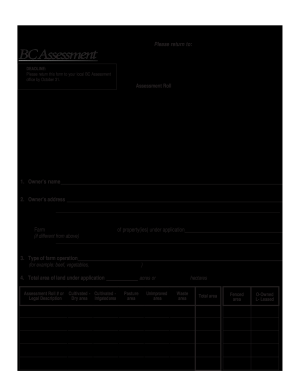
Get the free stable pretest answers form
Get, Create, Make and Sign



Editing stable pretest answers online
How to fill out stable pretest answers form

How to fill out stable pretest answers?
Who needs stable pretest answers?
Video instructions and help with filling out and completing stable pretest answers
Instructions and Help about stable 6th edition test answers form
You welcome to this stable program neonatal stabilization simulation project IN#39;Chris Carlson the author of the stable materials and founder of the stable program and this is Dr. Jodi Anderson who is our medical director for simulation Dr. Anderson is neonatologist, and she also runs the pediatric simulation program at OregonHealth Sciences University in Portland we all know that newborn care neonatology is a dynamic ever-changing field one of the newsstand probably most exciting changes we#39’ve seen in the past decade is the introduction of simulation thanks Chris this is really exciting the introduction of simulation into the stable program simulation can be thought of as an instructional strategy used within the curriculum to help learners achieve specific learning objectives within testable program we have cognitive knowledge objectives technical or procedural objectives and behavioral objectives getting at these behavioral objectives can be tricky the essential behaviors for optimal performance during stabilization and crisis situations are derived from crisis resource management also referred to as CRM when we look tour problems in medicine error rates for example some estimate like the IOM that over a hundred thousand patients die each year as a result of medical error in our hospitals that#39’s the equivalent of a jumbo jet crashing every day foray ear it#39’s really not acceptable, and we look at where these errors come from they come from problems with our teamwork with our communication from problems with our behavioral skills bothered#39’s a real push right now coming from the Joint Commission from the IOM and from those of us that really care about patient outcome to start addressing our needs and behavioral skill training and that#39’s what simulation allows us to do with in testable program we talk about behavioral skills within three categories another#39;rebased in the history of stable anticipate recognize and act we#39’re going to go through all of these skills anyhow these behaviors fit into each of these categories as we teach you to consider the behavior aspect of performance when we review the upcomingscenesso what is a logical starting point for introducing a simulation-based education program in your facility first didactic basis such as the stable program curriculum is the first step before practicing with simulation the goal is for caregivers to demonstrate understanding of post-resuscitation care principles and to also practice clinical decision-making while at the same time managing challenging behavioral and technical components of thesetime-pressuredemergencies another key point is that teamwork is an important component of the stable simulation curriculum we're working a dynamic environment with a variety of professions including physicians specialists nurses respiratory therapists pharmacists social workers etc therefore when we train with other disciplines who practice realistic team interactions ultimately...
Fill stable post test answers : Try Risk Free
What is stable program pre assessment?
Our user reviews speak for themselves
For pdfFiller’s FAQs
Below is a list of the most common customer questions. If you can’t find an answer to your question, please don’t hesitate to reach out to us.
Fill out your stable pretest answers form online with pdfFiller!
pdfFiller is an end-to-end solution for managing, creating, and editing documents and forms in the cloud. Save time and hassle by preparing your tax forms online.

























